This was
the big ‘Berlin day’ for many and our arrival into Rostock was 6am so having a
1st stage alert at about 5am was not ideal. We were told there was
smoke in one area and then kept updated until we were told it was an overheated
bearing on one of the thrusters, and was all sorted by the fire crew.
Rather
than going to Berlin, we decided to visit Wismar, a small Hanseatic city, that
I saw was a UNESCO heritage city. As we had been to all the other places that
appealed and wanted to do something more than just Rostock, we booked on the
second day. It was not a major mistake, but more research and I may not have
bothered.
Our guide
was Kati and she told us the greeting in this area is ‘moin’ (as guten morgon
etc are far too long). A chatterbox may even say ‘moin moin’. I do like these
quirky facts.
She spent
some time telling us about the Hanseatic League. We knew quite a bit already
after our time in Bremen but it still was a good memory jog. It was a
commercial and defensive confederation of merchant guilds
and market towns in North-western and Central Europe.
The league came to dominate Baltic maritime trade for three centuries along the coast of Northern Europe. It stretched from
the Baltic to the North Sea and inland during the Late Middle Ages and declined slowly after 1450. She also said that is why local cars have the
number plate HRO being the Hanseatic city of Rostock. She filled us in a bit
about Rostock as well, reminding us that it had been basically destroyed in the
war as it was a centre for aeroplane construction – it contained the main
Heinkel factory. St Marys, the largest church, did survive but was badly
damaged.
The whole
State has agriculture as its largest sector, followed by tourism, as the Baltic
Coast is also popular with other Germans. It is also a popular retirement area.
Our time
in Wismar started with a walking tour. 1229 is the first recorded mention of
Wismar, so it is older than that. At one stage it was under Swedish rule and
there are still parts where the Swedish heritage is seen, and there are special
celebrations each year. The town area is full of red brick which is the
traditional building material. Some buildings are built like this and then
plastered over, but many stayed as red brick.
Hanseatic architecture is known for its Brick Gothic
monuments.
Our guide
talked about the water house memorial. It was built to honour the people who
provided the town with water. Although it is higher than the surrounding area,
water was fed to the canals and hence to the town. Only one of the canals still
exists but all the wider streets had then run through the middle. Sometimes the
mayor would send the message not to ‘piss or pooh’ in the canal on Monday or
Tuesday because beer was going to be brewed on Wednesday.
In the
early days the street names were descriptive rather than prescribed. We were
shown on a map the Coffinmakers street (near the church and graveyard), ABC
street (with 26 homes) and the actual sign for tittstasterstrasse (‘tit
touching’ or ‘tit tasting’ street) . This is now painted on the wall as the
sign itself had been stolen so often. There were a few theories about the name. The politest is that it was narrow and people brushed each
other when passing. Another was that it was the area men would choose wet
nurses and the fuller the breasts, the more milk. There was also a third.
Nearby was the street with the public bathrooms which were often used as much
as once a month!! Kati said in those days’ people stank.
We saw St
Mary’s from the outside. Many of the Hanseatic towns had a St Mary’s which was
the largest of the churches in the towns we were told. Part is still intact but
the rest was destroyed in WW2. The decision has been made to not restore it but
rebuild walls enough to block out the cars in the nearby streets. It took 6
million bricks to build St Mary, all made by hand by monks. We saw a brick
being made as part of a demonstration, but with the comment that the monks made
800 in a shift. They would take between 2 weeks and 2 months to dry.
The
former residence of the Duke of Mecklenburg (the one whose main residence is Schwerin
castle) was lovely. It was then used as a courtroom. On the next church we saw,
the holes in the walls were pointed out. These were for the scaffolding used to
construct the church. We were told that the roses in the street grow well when
the city is prosperous because the mice are well fed in churches and so don’t
attack the roots of the roses.
Part of
this tour was a visit to a brewery, with a large bread pretzel each, and three
beers to taste. I did taste mine (Pilsner, dark and red) but no more than a
taste. The German brewer did suggest we could not leave if the beer was not
finished, but I took that as a joke.
He said
beer had been brewed on the site 502 years ago. The oldest law in Germany is
the Purity Law which says that beer can only be made with water, malt, hops and
yeast. He ran through the brewing process, and reminded us that there is a display
on the ground floor. We were invited to the next brewing – at 4am Tuesday.
The
history of the town is very strongly linked to brewing. At its peak there were
183 breweries in a town of 7000 people, with most being exported. 107L/year is
the average consumption per person now, having been 350L/year in the past.
Brewing used to be done in winter as you need the cold temperatures but
refrigeration changed that into an all year activity. This brewery always makes
pilsner and dark and then one other. In Spring it is wheat beer, summer
something else etc. and they also make a special Christmas beer. A tray of
different malts was passed around so we could see the range of colours. When
under Swedish rule, the taxes were high and many breweries closed. This one
reopened in 1995 and makes between 1000L and 1500L each brew, and they brew
three times a week.
We found a couple of caches that took us to
points of interest in our free time here. One was at the Water Gate. It was
built in the middle of the 15th Century and it was the only gate of the city
wall at the seaside. The city wall was 3100m long, up to 4m high and 1m thick
in the base. It had five major gates of which only the great Watergate is
preserved. The old name, Helleporte (Hells Gate), was used until 1680.
A coupl
e
of people were upset that the shops were closed – well it was Sunday. They may
have cheered up as there were some open after our brewery trip, although they sold
mainly souvenirs and food. We did buy an ice-cream, and had a brief chat to a local
and his son, who smiled at us a lot as he ate chips.
]Back at
the ship we went to the Lido for lunch then I took the free shuttle into
Rostock while John relaxed. The thought of seeing a(nother - JB) church and town
hall did not appeal to him. It was perhaps a shame, as I found Rostock to be a
pretty place, although almost all rebuilt after the war. There were quite a few
people in the various squares and cafes and down by the shore enjoying the
summer’s day.
I went
first to St Mary’s which is as Kati suggested the largest church here. It was
the main parish church in 1265 but from 1531 it has been a Lutheran church. It
is a large brick Gothic church with a Bell Tower that was nor completed until
the end of the 18th century. The pulpit was installed after the
reformation and heavily decorated. The stained glass window is one of the
largest in Europe and survived the war but in a state of disrepair. It was
fully restored over 5 years from 2003 to 2008 and extra protection was fitted.
I was
most interested in seeing the 15th century astronomical clock, although my
timing was out so I did not see the Apostles going around. It is the only one of its kind still in
working condition and tells daily time, the moon phases, the zodiac and
calendar, valid until 2150.
I then
went to the Town Hall which is noted for its snake or eel design. The original
building was built in the 15th century but in 1729 a Baroque porch was built in front of the Gothic wall,
with its seven towers.
I
wandered through the squares then down to the shore before heading for the bus
to get the 4.30pm one back to the port. It was already there but not full so I
found a seat and sent John a message. I was later back than expected because
the bus did not leave at 4.30pm but 4.45pm and stopped on the way. Grr… My
cocktail by the pool was very welcome.
We met
Teresa from Seattle in the pool and then opted for a short time in the hot pool
which was not too hot, so nice. She had had a bad day so we agreed to meet her
and her husband Jack for dinner just before 8pm. It was a nice way to end the
day.

 Rostock, Mecklenburg-Vorpommern, Germany
Rostock, Mecklenburg-Vorpommern, Germany
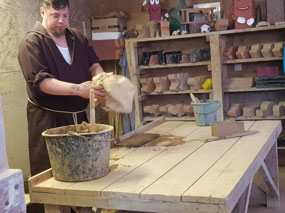
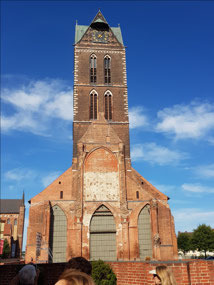

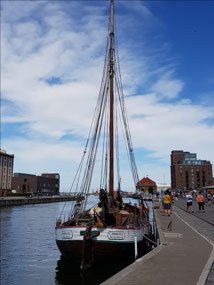
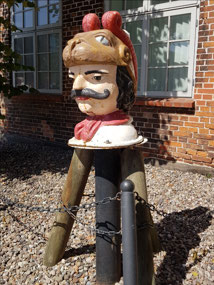
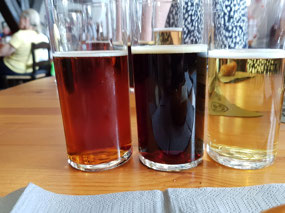
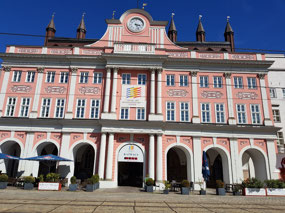
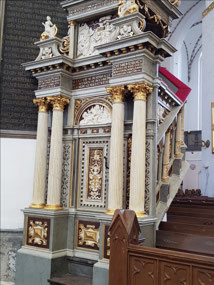
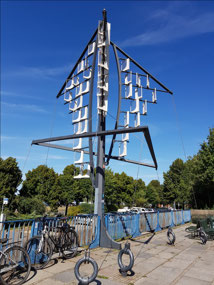










2025-05-22